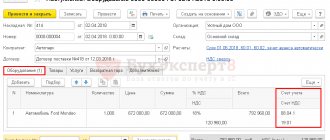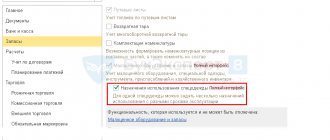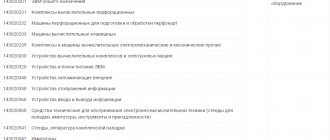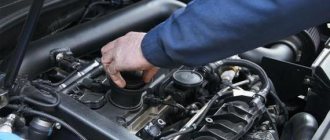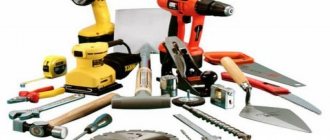General procedure for calculating depreciation
Start calculating depreciation on an asset from the date of its recognition in accounting.
It is permissible to start accruing depreciation from the 1st day of the month following the month of recognition of fixed assets, having secured this option in the accounting policy (clause “a”, clause 33 of FSBU 6/2020). The accrual of depreciation is stopped from the date the asset is written off from accounting. But if the accounting policy establishes that the accrual of depreciation begins on the 1st day of the month following the month of recognition of the fixed asset, then it is necessary to stop accruing depreciation on the 1st day of the month following the month of write-off of the fixed asset (clause “b”, paragraph. 33 FSBU 6/2020, clause 7 PBU 1/2008).
The presence of state registration does not affect the start date of depreciation on fixed assets in accounting. The exception is cases when state registration is a necessary condition for using the object for its intended purpose.
For example, admission of a vehicle to participate in road traffic (release on the line) is possible only after state registration of the vehicle.
Depreciation is calculated regardless of the results of the organization’s activities in the reporting period (clause 29 of FSBU 6/2020). You can do this at the end of the reporting period established in your organization. FSBU 6/2020 does not require mandatory monthly depreciation calculations.
The amount of accrued depreciation includes:
- in the cost of work in progress when the fixed assets are used in normal activities (paragraph “d”, paragraph 23 of FSBU 5/2019 “Inventories”);
- into the cost of a non-current asset, if the OS is used to create or acquire this asset (clause “c”, paragraph 10 of FAS 26/2020 “Capital Investments”);
- for other expenses - in other cases (clause 4 of PBU 10/99). For example, other expenses include depreciation of fixed assets that are temporarily not used in the normal activities of the organization and, therefore, leased.
The procedure for reflecting depreciation of tools and equipment in accounting
The amounts of accrued depreciation are reflected in account 02 in correspondence with the production cost accounts: Dt 20, 44, 26 Kt 02. Deductions are made monthly from the month following registration.
An example of calculating depreciation using the accelerated method
Avtodrom LLC uses tools for repairing transport equipment in its activities. After purchasing a lift worth 250,000 rubles, the company decided to accelerate depreciation with a coefficient of 2. The service life is 10 years. In enterprise accounting:
- The depreciation rate is determined: N = 1 / 10 x 100% = 10%;
- The write-off amount for the first year is calculated: A1 = 250,000 x 10% x 2 / 100% = 50,000 rubles;
- The write-off amount for the second year is determined: A2 = 200,000 x 10% x 2 / 100% = 40,000 rubles;
- For the third year: A3 = 160,000 x 10% x 2 / 100% = 32,000 rubles;
- For the fourth year: A4 = 128,000 x 10% x 2 / 100% = 25,600 rubles;
- For the fifth year: A 5 = 102,400 x 10% x 2 / 100% = 20,480 rubles;
- Further according to a similar scheme.
Enterprises that use a simplified accounting procedure have the right to expense the cost of instruments at a time when registering a fixed asset.
Useful life
The useful life (SPI) of a fixed asset in accounting is, as a rule, the period during which the use of the object will bring economic benefits to the organization (clause 8 of FSBU 6/2020).
The useful life (SPI) of an asset can be established (clause 8 of FSBU 6/2020):
- as the period during which its use will bring economic benefits to your organization. We recommend setting it in months, despite the fact that FAS 6/2020 does not require monthly depreciation;
- in natural units of measurement, reflecting the amount of production (volume of work in physical terms) that the company expects to receive from its use. Set it in pieces, square meters, etc.
SPI is determined based on (clause 9 of FSBU 6/2020):
- the expected period of operation of the OS, taking into account the productivity, capacity of the facility, regulatory, contractual restrictions, intentions of the organization’s management, etc.;
- expected physical wear and tear. It depends on the operating mode and conditions, the frequency of repairs, the influence of an aggressive environment and other similar factors;
- expected obsolescence, for example, as a result of improvements in the production process or changes in demand for products produced by the facility;
- plans to replace the OS (technical re-equipment).
Tool depreciation: procedure for determining depreciation rates
When registering equipment, tools, inventory, the period of use during which the inventory unit is capable of bringing economic benefits is determined. In accounting, the estimated useful period is determined by the enterprise. It is advisable to check the useful life with the Classifier of objects belonging to a depreciation group used in tax accounting.
Depending on the group, a period of use is established - the implementation of the assigned tasks by the tools. The length of the period affects the rate of deductions. Each of the Classifier groups provides the opportunity for enterprises to set the operating period within a period of several years. Enterprises independently choose the number of years of use within the allotted time period.
Liquidation value
The basis for calculating depreciation is the difference between the book value and the liquidation value.
Salvage value is the amount that can be received for an item at the end of its useful life when it is in the condition characteristic of that time. It includes the cost of material assets remaining from disposal and subtracts the costs of disposal.
A non-zero salvage value means that the item can still be used.
Liquidation value is considered to be zero if:
- the firm does not expect proceeds from disposal of the asset at the end of its useful life;
- the expected amount is not significant;
- the expected amount cannot be determined.
For example, the salvage value can be considered zero when it is intended to use the OS for the entire period established for it according to its technical characteristics, then dismantle it, and the cost of materials obtained from dismantling will not be significant.
The depreciation amount is calculated so that by the end of the depreciation period the book value of the fixed asset becomes equal to its liquidation value (clause 32 of FSBU 6/2020).
Please note: depreciation should be suspended when the book value of an asset is equal to or less than its liquidation value. And if subsequently the liquidation value of such an asset again becomes less than its book value, then depreciation must be resumed (clause 30 of FSBU 6/2020).
Using reduction factors
In relation to fixed assets, taxpayers can apply special increasing and decreasing coefficients provided for by the Tax Code of the Russian Federation to the basic depreciation rate.
In accordance with paragraph 7 of Art. 259 of the Tax Code of the Russian Federation, increasing coefficients are provided in relation to:
- depreciable fixed assets used to work in aggressive environments and (or) extended shifts. In this case, the taxpayer has the right to apply a special coefficient, but not higher than 2. An aggressive environment is understood as a set of natural and (or) artificial factors, the influence of which causes increased wear (aging) of fixed assets during their operation. Also, working in an aggressive environment is considered to be the presence of fixed assets in contact with an explosive, fire-hazardous, toxic or other aggressive technological environment, which can serve as the cause (source) of initiating an emergency;
- depreciable fixed assets that are the subject of a financial lease agreement (leasing agreement). In this case, the taxpayer, whose fixed asset must be accounted for in accordance with the terms of the financial lease agreement (leasing agreement), has the right to apply a special coefficient to the basic depreciation rate, but not higher than 3. These provisions do not apply to fixed assets related to the first, the second and third depreciation groups, if depreciation for these fixed assets is calculated using a non-linear method. Taxpayers who transferred (received) fixed assets that are the subject of a leasing agreement concluded before January 1, 2002, have the right to charge depreciation on this property using the methods and norms that existed at the time of transfer (receipt) of the property, as well as using a special coefficient no higher than 3.
https://www.youtube.com/watch{q}v=ytpressru
“Taxpayer organizations that have the status of resident of an industrial-production special economic zone have the right to apply a special coefficient to the basic depreciation rate in relation to their own fixed assets, but not higher than 2.”
Example 5. In February, the organization put into operation a fixed asset item purchased in the same month for 236,000 rubles, including VAT of 36,000 rubles. This fixed asset belongs to the fourth depreciation group, and the organization, when accepting the object for accounting, established a useful life of 6 years (72 months).
The monthly depreciation rate for this fixed asset, calculated based on the established useful life of the object and a special increasing factor, will be 1.94% ((1 / 72 months) x 100% x 1.4).
The amount of monthly depreciation deductions taken into account when taxing profits will be equal to 3880 rubles. (RUB 200,000 x 1.94%).
Calculation of depreciation at rates lower than those established by Art. 259 of the Tax Code of the Russian Federation is permitted by decision of the head of the taxpayer organization. The decision on whether the organization will apply reduction factors when calculating depreciation rates must be enshrined in the organization's accounting policies.
The use of reduced depreciation rates is allowed only from the beginning of the tax period and throughout the entire tax period.
According to paragraph 9 of Art. 259 of the Tax Code of the Russian Federation for passenger cars and passenger minibuses, the initial cost of which, respectively, is more than 300 thousand rubles. and 400 thousand rubles, the basic depreciation rate is applied with a special coefficient of 0.5. It should be noted that the use of a reduction factor for these fixed assets is mandatory and does not depend on the wishes of the organization.
Example 6. In January 2006, an organization put into operation a passenger minibus, the initial cost of which is 470,000 rubles. (without VAT). The minibus, in accordance with Resolution No. 1, belongs to the third depreciation group; the organization, when accepting the object for accounting, established a useful life of 3.5 years (42 months). Depreciation for profit tax purposes is calculated using the straight-line method.
The estimated useful life is 42 months, the monthly depreciation rate taking into account the reduction factor will be equal to 1.19% ((1 / 42 months) x 100% x 0.5).
The amount of monthly depreciation deductions taken into account for profit tax purposes will be 5,593 rubles. (RUB 470,000 x 1.19/100%).
The amount of depreciation accrued during the useful life of the fixed asset will be equal to 234,906 rubles, while its original cost is 470,000 rubles.
From the above example it is clear that when using a reduction factor and applying the straight-line depreciation method, the organization will not be able to completely write off the cost of a given fixed asset as production costs or selling expenses for profit tax purposes during the established period of its operation.
Calculation of depreciation on an object of depreciable property, in accordance with clause 2 of Art. 259 of the Tax Code of the Russian Federation, terminates on the 1st day of the month following the month when the cost of such an object was completely written off or when this object was removed from the depreciable property for any reason. Based on the norm of this paragraph, the organization, even after the end of the life of the car established for tax accounting purposes, in the event that the car continues to be used, must continue to accrue depreciation, since when applying a reduction factor to the basic depreciation rate, the cost of this fixed asset was not completely written off .
Clause 11 of Art. 259 of the Tax Code of the Russian Federation provides that when selling property for which reduced depreciation rates have been established, the tax base is not recalculated for the amount of underaccrued depreciation against the norms provided for by the Tax Code of the Russian Federation for tax purposes.
The procedure for calculating depreciation on fixed assets put into operation before January 1, 2002, that is, before the entry into force of Ch. 25 of the Tax Code of the Russian Federation, defined by Art. 322 of the Tax Code of the Russian Federation. This article provides that the useful life of such fixed assets is established independently as of January 1, 2002, taking into account Resolution No. 1 and the useful life established by Art. 258 Tax Code of the Russian Federation.
We invite you to read: Tax deduction when purchasing an apartment by spouses
Let us turn to Letter of the Federal Tax Service of Russia dated November 16, 2004 N 02-5-11/ [email protected] “On the application of a reduction factor to fixed assets acquired before January 1, 2002” (hereinafter referred to as Letter N 02-5-11/ [ email protected] ). Letter N 02-5-11/ [email protected] , in particular, states that depreciable fixed assets, the actual life of which is longer than the useful life of the specified depreciable fixed assets, established by the requirements of Art.
https://www.youtube.com/watch{q}v=upload
258 of the Tax Code of the Russian Federation, must be allocated by the taxpayer to a separate depreciation group when assessed at residual value. This residual value is subject to inclusion in expenses for tax purposes evenly over a period determined by the taxpayer independently, but not less than seven years from the date of entry into force of Chapter. 25 Tax Code of the Russian Federation.
Further, Letter N 02-5-11 / [email protected] states that for cars and passenger minibuses, including those purchased before January 1, 2002 and having an initial cost of 300 thousand and 400 thousand rubles, respectively, depreciation is defined as the product of the residual value and the depreciation rate (calculated based on the remaining useful life), determined in accordance with Art. 322 of the Tax Code of the Russian Federation, multiplied by a factor of 0.5.
A slightly different situation arises when taxpayers, when calculating depreciation, use a non-linear method of calculating depreciation. When using the non-linear method, the organization will be able to include as expenses a greater amount of depreciation than when using the linear method.
Example 7. Let's use the conditions of example 6 and calculate depreciation using the nonlinear method.
The depreciation rate, calculated based on the useful life and the reduction factor, will be 2.38% ((2 / 42 months) x 100% x 0.5).
| Period | Calculation of depreciation amount, rubles | Residual value at the beginning of the next month, rubles |
| February 2006 | 470,000 x 2.38% = 11,186 | 470 000 — 11 186 = 458 814 |
| March 2006 | 458,814 x 2.38% = 10,919.77 | 458 814 — 109 19,77 = 447 894,23 |
| April 2006 | 447,894.23 x 2.38% = 10,659.88 | 447 894,23 — 10 659,88 = 437 828,47 |
Having calculated the amount of depreciation charges over the entire useful life of the object, we obtain an amount equal to RUB 299,105.43. When using the non-linear method, the organization will also not be able to write off the entire cost of the fixed asset. However, the amount of accrued depreciation when using this method is greater than the amount of accrued depreciation when using the linear depreciation method, equal to RUB 234,906.
Based on clause 9 of Art. 259 of the Tax Code of the Russian Federation, a reduction factor is applied by organizations that have received or leased passenger cars and passenger minibuses. The specified property is included in the corresponding depreciation group, and the basic depreciation rate is applied to this property, taking into account the special coefficient applied by the taxpayer for this type of property.
If the parties to the leasing agreement provide for the use of an increasing factor of no more than 3, then the coefficient applied to the basic depreciation rate will be calculated as the product of the established increasing factor by 0.5.
Example 8 from the consulting practice of JSC “BKR-Intercom-Audit”.
Question: OJSC purchases Gazelle vehicles (vans) with thermal covers on lease. Moreover, thermocouples are purchased and installed by another company (also on leasing terms). Cars and thermal cars belong to different depreciation groups, with different depreciation periods.
- How to correctly account for this fixed asset item: separately or as a single object, and to which depreciation group should it be assigned{q}
- What accelerated depreciation rate to apply{q}
Depreciation methods
There are three methods for calculating depreciation on fixed assets in accounting:
- linear method;
- reducing balance method;
- method of writing off cost in proportion to the volume of products (works) produced.
When calculating depreciation, you can use any of these methods. To do this, divide all fixed assets in accounting into homogeneous groups that have common characteristics. For example, buildings, computers, transport, furniture, etc. For fixed assets of one group, you can use only one of the listed methods. Apply the selected method throughout the entire service life (useful use) of the fixed asset.
Read in the berator “Practical Encyclopedia of an Accountant”
Straight-line depreciation method
Reducing balance method
Method of writing off cost in proportion to the volume of products (works) produced
Example. How to install shock absorption elements
Suppose a company purchased equipment worth RUB 1,000,000. (without VAT). It is expected that it will be used to produce products uniformly for 5 years without significant repair costs. According to the seller, similar equipment that has been in use for 5 years is sold for 150,000 rubles. (without VAT). The costs of preparing fixed assets for sale are not expected. The company has established the following elements of depreciation: SPI - 60 months (5 years); liquidation value - 150,000 rubles; method of calculating depreciation - linear.
Formulas used for various accrual options in accounting
When calculating annual deductions in accounting, the following formulas are used: (click to expand)
- The linear method is based on the initial cost: A = Sp x N / 100%, where Sp is the cost of registration, N is the depreciation rate;
- To calculate the method of reducing the balance, the basis is the residual value and the coefficients accelerating write-off: A = Co x N x K / 100%, where Co is the residual value, N is the norm, K is the acceleration factor;
- To apply the cumulative method, the initial cost and the number of years of use are taken: A = Sp x Chki / Chpi, where Chki is the number of years until the end of use of the tool, Chpi is the total number of years of operation.
- When using the production method, the initial cost and indicators of the volume of the plan and the actual production of products are taken into account: A = Of x Sp / Opl, where Of is the actual output of products, Opl is the planned output.
The option chosen by the enterprise is applied to the entire group of homogeneous tools. The disadvantage of using non-linear methods of writing off depreciation is the lack of accounting by company code. The acceleration factors selected in accounting are also applied to the entire tool group.
Special depreciation rate in tax accounting
The second conditional exception to the general rules for calculating depreciation charges is the use of increasing or decreasing factors to the depreciation rate.
According to Article 259.3 of the Tax Code of the Russian Federation, there are two first (that is, increasing) coefficients that would increase the amount of depreciation. A special coefficient of no more than 2 is applied to fixed assets used in aggressive conditions or under conditions of increased use (increased shifts), and when using a non-linear depreciation method, such fixed assets should not belong to 1-3 depreciation groups.
The same coefficient is applied by industrial-type agricultural organizations, residents of tourist and recreational SEZs and SEZ participants in relation to those fixed assets that belong to them as property rights. The situation is similar with facilities that have high energy efficiency according to the government list.
A special coefficient of up to 3 can be applied to fixed assets, again only from 4-10 depreciation groups, if they are the subject of a leasing agreement, to objects used exclusively for scientific and technical activities, as well as depreciable property of organizations whose activity is hydrocarbon production raw materials at a new offshore field.
As you can see, the use of increasing factors that allow you to write off the cost of equipment in an accelerated manner is strictly regulated. Reducing special coefficients that reduce possible income tax expenses are a matter solely for the organization itself. There are no restrictions on working with such coefficients from a legal point of view. So the company has the right to determine the procedure for working with them when drawing up its accounting policy for tax purposes.
We invite you to familiarize yourself with: Complaint to the bank, sample and drafting example
